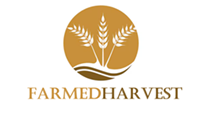There’s a way to make more money at farmers markets without changing the product, its price or the time spent manning a booth.
Accept credit cards or other forms of digital payment.
Cornell University researchers have found that farmers market booths that accept digital payments have more customers and make more money from existing buyers.
“In our 2021 research with 10 meat farms at farmers markets, customers who paid with credit cards spent $2.28 more than customers paying with cash,” said Matt LeRoux, a Cornell market strategy Extension agent.
With Square, a common software for card transactions, LeRoux calculated that average transaction fees (for a meat processor) would be $0.73.
If a farmer is concerned about the fees, they may opt for a minimum purchase price to use cards or to include a percentage fee for card purchases, but producers may want to raise prices enough to cover the service charges too, LeRoux said.
LeRoux also suggested offering a “cash discount” for those paying that way instead of a charge for using a card.
There are various options for accepting digital payments. Square exemplifies one group to choose from — those being point-of-sale softwares.
“It’s like a cash register,” LeRoux said.
The marketplace has several types of software in the point of sale category. These may be used to record cash purchases too or just for credit card transactions.
But payment-processing options that just run a transaction also exist, LeRoux said.
Software may vary in everything from fees to required hardware to usability.
While most options require an internet connection to show completed transactions, many can run in an offline mode. However, in this mode, systems will not be able to identify a declined card.
“I wouldn’t get too scared about that,” LeRoux said. “You’re going to go day by day. You’re going to go for a day at the farmers market, you’re going to accept cards offline, you’re going to get home, get on the data and find out if a card was declined and then you make your decision for the next day — if you’re going to do that again or if you’re going to refuse cards.”
Whatever is used, just don’t forget to advertise the available payment options.
In Cornell’s research of 10 meat farms that all accepted credit cards, one farm stood out because only 32% of their customers were paying by card, compared to the study average of 57%, LeRoux said. It was later realized the operation didn’t have a sign at their booth that said they could accept credit cards.
With the addition of a sign, the average amount spent by all customers increased by about 10% even though the number of customers who paid with credit cards only increased by 3%, LeRoux said. But more importantly, the number of customers who visited the booth per day increased from 67 to 90 with the addition of a sign.
This particular farm’s sign said: “We accept credit cards, cash, Apple Pay and checks.”
Accepting Food Benefits
While many food benefit programs, like SNAP, are federal government programs, they are implemented by individual states.
And their availability at farmers markets can vary market by market.
Token programs, where those paying with SNAP make an upfront transaction with the market and get tokens to give to individual vendors, exist in many states, said Brian Moyer, Penn State Extension agent. Some markets even offer matches where a customer’s buying power is doubled thanks to a sponsor.
But this isn’t in every Pennsylvania market, Moyer said. He’d guess about 50 of Pennsylvania’s 330 markets have such a program, which takes a full-time manager to run.
Farmers may take matters into their own hands if they’d like to accept food benefits at their booth or on-farm stand. Novo Dia runs a software that works similarly to Square, allowing electronic processing of food benefits, said Jack Riffle, executive director of the Farmers Market Federation of New York.
In New York, a wireless EBT grant will refund farmers for any money spent on software fees, Riffle said.
Managing either option can be a lot of work — either for the farmer or the market, Moyer said. So if doing so, Riffle suggested advertising the payment option.
“Sometimes I think there’s a weariness of customers, like, ‘Is this benefit accepted here? Will this person accept it?’” Riffle said “And I think the last thing that customer wants to hear is the answer to their question being no. And farmers can sort of solve that often by increasing the education for their employees as well as quality signage that indicates ‘yes, we accept SNAP.’”





 No products in the cart.
No products in the cart.